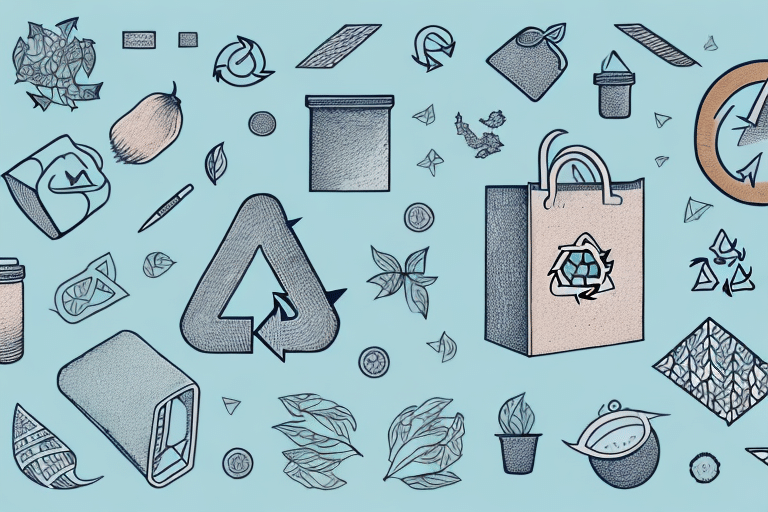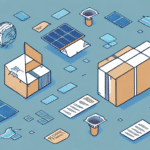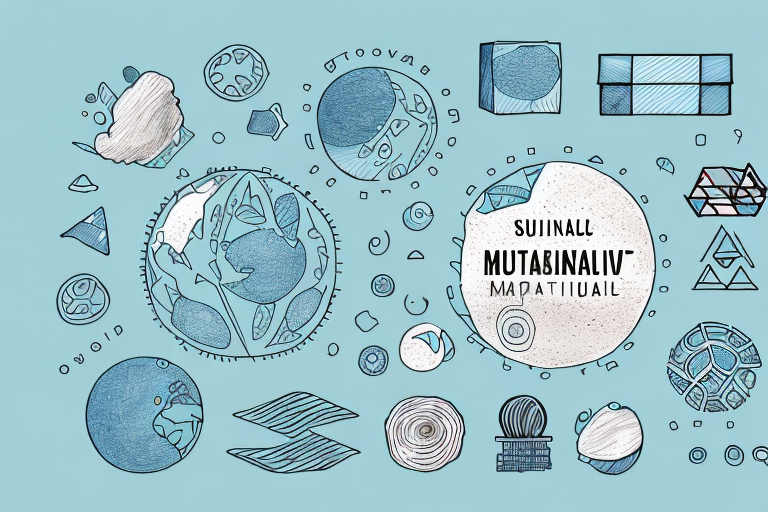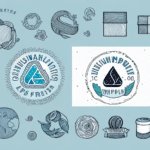Exploring Eco-Friendly Packaging Materials for Sustainable Solutions
In today's world, businesses are increasingly prioritizing sustainability to minimize their ecological footprint. A critical aspect of sustainable business practices is the use of eco-friendly packaging materials. Traditional packaging methods have a well-documented negative impact on the environment, and transitioning to sustainable alternatives is both a responsibility and an opportunity for businesses. This article delves into the importance of eco-friendly packaging, various sustainable packaging solutions available, innovations in packaging technology, and strategies to implement these solutions effectively.
The Importance of Eco-Friendly Packaging
Environmental Benefits
Eco-friendly packaging significantly reduces waste generation. According to the Environmental Protection Agency (EPA), packaging accounts for a substantial portion of municipal solid waste, with plastics being a major contributor. By utilizing biodegradable or compostable materials, businesses can ensure that packaging decomposes naturally, thereby lowering landfill accumulation and reducing pollution in ecosystems.
Economic Advantages
While sustainable packaging may entail higher initial costs, it often leads to long-term savings. Sustainable materials, such as those derived from renewable resources, can be more cost-effective over time due to their durability and lower resource consumption. A McKinsey report highlights that companies adopting sustainable packaging can achieve significant cost reductions through material efficiency and waste minimization.
Brand Differentiation
Consumers are increasingly making purchasing decisions based on a company's environmental practices. Utilizing eco-friendly packaging allows businesses to differentiate themselves in the market by showcasing their commitment to sustainability. This can enhance brand reputation and foster customer loyalty among environmentally conscious consumers.
The Negative Impacts of Traditional Packaging
Environmental Consequences
Traditional packaging materials, such as plastic bags and Styrofoam containers, are not biodegradable and can persist in the environment for hundreds of years. The National Geographic reports that millions of tons of plastic waste end up in oceans annually, posing severe threats to marine life and disrupting ecosystems.
Economic Costs
The production and disposal of conventional packaging materials are resource-intensive, leading to increased operational costs for businesses. Additionally, the burden of managing packaging waste often falls on local governments, resulting in higher taxes and public expenditures. According to a World Bank study, ineffective waste management practices can hamper economic development and lead to significant financial losses.
Sustainable Packaging Solutions
Businesses have a variety of sustainable packaging options to choose from, each with unique benefits and applications:
- Biodegradable Plastics: Made from renewable resources like cornstarch, these plastics break down naturally within months, reducing environmental impact.
- Compostable Plastics: Derived from plant-based materials, compostable plastics can decompose in a compost heap within weeks, returning nutrients to the soil.
- Paper-Based Packaging: Utilizing recycled paper and cardboard, this option is both biodegradable and recyclable.
- Mushroom Packaging: Created from agricultural waste and mycelium, mushroom packaging is fully biodegradable and sustainable.
- Edible Packaging: Innovatively designed from edible materials like seaweed, edible packaging can be consumed alongside the product.
- Reusable Packaging: Containers made from materials such as glass or metal, designed for multiple uses, thereby minimizing waste.
Biodegradable Plastics
Biodegradable plastics, such as polylactic acid (PLA), offer properties similar to traditional plastics but without the long decomposition time. They are particularly effective in reducing plastic pollution in marine environments. According to the Encyclopedia Britannica, PLA can decompose in industrial composting facilities within six months.
Compostable Plastics
Compostable plastics are designed to break down in composting environments, turning into nutrient-rich soil. Studies published in the Journal of Cleaner Production indicate that compostable plastics can significantly reduce landfill waste and lower greenhouse gas emissions.
Paper-Based Packaging
Paper-based packaging leverages the abundance of recycled paper and cardboard to create durable, biodegradable materials. The Recycling Coalition emphasizes the importance of using recycled paper to minimize deforestation and conserve natural resources.
Mushroom Packaging
Mushroom-based materials, derived from mycelium and agricultural waste, offer a fully biodegradable solution with excellent insulating properties. According to a study in ScienceDirect, these materials can effectively protect products during transit while minimizing environmental impact.
Edible Packaging
Edible packaging is an innovative approach that uses materials such as seaweed to create packaging that can be consumed along with the product. A Frontiers in Energy Research article explores the potential of edible packaging to revolutionize the food industry by reducing waste and enhancing consumer experience.
Reusable Packaging
Reusable packaging involves using containers that can withstand multiple uses, such as glass jars or metal tins. This approach not only reduces waste but also decreases the demand for new packaging materials. The Ellen MacArthur Foundation highlights the economic and environmental benefits of reusable packaging in promoting a circular economy.
Biodegradable Materials for Eco-Friendly Packaging
Biodegradable materials play a pivotal role in sustainable packaging by breaking down naturally without harming the environment. Key biodegradable materials include:
- Polylactic Acid (PLA): Derived from cornstarch, PLA is widely used in packaging due to its biodegradability and versatility.
- Cellulose: Made from plant-based fibers like cotton, cellulose is utilized in eco-friendly bags and packaging paper.
- Starch-Based Materials: Produced from crops such as potatoes and rice, these materials are suitable for packaging food and other consumables.
- Polyhydroxyalkanoates (PHA): A family of biodegradable polymers produced by microorganisms, PHA is used in various applications including packaging and medical devices.
- Chitosan: Derived from chitin found in the exoskeleton of crustaceans, chitosan is used for its antimicrobial properties in food packaging.
Polylactic Acid (PLA)
PLA is a biodegradable plastic that maintains similar properties to conventional plastics but breaks down in composting environments. According to the Nature journal, PLA decomposes within a few months under specific conditions, making it an excellent alternative for packaging applications.
Cellulose
Cellulose-based packaging leverages the abundance of plant fibers to create durable, biodegradable materials. The Cellulose Europe organization highlights its benefits in reducing reliance on non-renewable resources.
Starch-Based Materials
Starch-based materials, made from renewable resources like potatoes and rice, are ideal for packaging food items and laundry detergents. Research in the Journal of Polymers and the Environment shows that starch-based packaging can effectively reduce environmental impact while maintaining product integrity.
Polyhydroxyalkanoates (PHA)
PHA is a family of biodegradable polymers produced by microorganisms through fermentation processes. These materials are used in packaging, disposable cutlery, and medical applications due to their biodegradability and biocompatibility. A study in the Frontiers in Bioengineering and Biotechnology discusses the potential of PHA as a sustainable alternative to traditional plastics.
Chitosan
Chitosan, derived from the chitin found in crustacean shells, is utilized for its antimicrobial properties in food packaging. This not only extends the shelf life of perishable products but also ensures food safety. The Journal of Applied Polymer Science highlights the effectiveness of chitosan in enhancing the quality and safety of packaged goods.
Innovations in Sustainable Packaging Technology
The packaging industry is witnessing remarkable innovations aimed at enhancing sustainability:
- Shrimp Shell Biodegradable Plastics: Utilizing shrimp shells, this material offers robustness and biodegradability.
- Plant-Based Compostable Materials: These materials mimic traditional plastics but are entirely compostable, aligning with circular economy principles.
- Mushroom-Based Packaging: Made from mycelium, the root structure of mushrooms, this packaging is biodegradable and provides excellent insulation for fragile items.
Shrimp Shell Biodegradable Plastics
Innovatively made from shrimp shells, these biodegradable plastics present a sustainable alternative with similar durability to conventional plastics. Research published in the Journal of Cleaner Production indicates that shrimp shell-based plastics can significantly reduce environmental pollution by decomposing naturally without releasing harmful substances.
Plant-Based Compostable Materials
Plant-based compostable materials are engineered to break down efficiently in composting environments, reducing reliance on fossil fuels. According to the Science of The Total Environment, these materials offer a viable solution for sustainable packaging, minimizing waste and promoting a circular economy.
Mushroom-Based Packaging
Mushroom-based materials, derived from mycelium and agricultural waste, offer a fully biodegradable solution with excellent insulating properties. According to a study in ScienceDirect, these materials can effectively protect products during transit while minimizing environmental impact.
The Benefits of Using Reusable and Recyclable Materials
Waste Reduction
Reusable packaging significantly lowers the volume of single-use waste. Materials like glass and metal containers can be used multiple times, reducing the need for constant production of new packaging and decreasing landfill burden.
Cost Savings
While the initial investment in reusable packaging might be higher, it leads to long-term savings by reducing the cost associated with purchasing single-use packaging materials. According to the Ellen MacArthur Foundation, a circular economy approach to packaging can result in substantial cost efficiencies through reduced material costs and waste management expenses.
Brand Reputation
Using recyclable materials enhances a company's reputation as an environmentally responsible entity. This can attract consumers who prioritize sustainability, leading to increased brand loyalty and customer retention.
Implementing Eco-Friendly Packaging in Your Business
Choosing the Right Material
Selecting an appropriate sustainable packaging material involves considering the type of product, packaging size and shape, environmental impact, and cost. Collaborating with reputable suppliers and conducting thorough research are essential steps in making informed decisions.
Cost-Effective Strategies
- Utilize Recycled Materials: Incorporating recycled materials can lower costs while maintaining sustainability.
- Supplier Collaboration: Partnering with suppliers to explore sustainable options and negotiate favorable pricing can make the transition more affordable.
- Optimize Packaging Design: Efficient packaging design reduces material usage, lowering costs and material waste.
- Incremental Transition: Gradually shifting to sustainable packaging allows businesses to spread out costs and adjust operations accordingly.
Overcoming Common Challenges
Transitioning to eco-friendly packaging presents several obstacles, including the availability of sustainable materials, higher upfront costs, and the need for consumer education. Overcoming these challenges requires strategic planning, investment in sustainable supply chains, and marketing efforts to inform consumers about the benefits of sustainable packaging.
Case Studies
Numerous companies have successfully adopted sustainable packaging solutions, yielding significant benefits:
- H&M: Implemented a recycled packaging program, achieving a 25% reduction in cardboard use and a 60% decrease in plastic packaging.
- LEGO: Utilizes sustainable materials such as sugarcane for packaging, demonstrating a commitment to reducing its carbon footprint.
The Future of Eco-Friendly Packaging: Trends and Predictions
The landscape of eco-friendly packaging is continually evolving, with emerging trends and advancements that promise to further enhance sustainability:
- Edible Packaging: Predicted to become more widespread, offering a novel and sustainable way to package food items.
- Increased Adoption of Biodegradable Materials: More companies are expected to embrace materials that can naturally decompose, aligning with global sustainability goals.
- Durable and Protective E-commerce Packaging: The rise in e-commerce drives demand for packaging that is both eco-friendly and capable of protecting products during transit.
Edible Packaging
Edible packaging is set to revolutionize the food industry by providing a waste-free alternative to traditional packaging. Research in the Frontiers in Energy Research explores the potential of edible packaging made from seaweed and other natural ingredients to reduce food waste and packaging costs.
Biodegradable Trends
With growing environmental awareness, the adoption of biodegradable materials is expected to rise. Innovations in material science are making biodegradable packaging more affordable and functional, encouraging widespread use across various industries.
E-commerce Protective Packaging
The surge in online shopping necessitates packaging that is both protective and sustainable. Advances in materials that offer durability without compromising environmental standards are critical to meeting the demands of the e-commerce sector.
Cost-Effective Ways to Implement Sustainable Packaging Solutions
Adopting sustainable packaging does not have to strain a business's finances. Here are some cost-effective approaches:
- Use Recycled Materials: Incorporating recycled materials can reduce costs and environmental impact simultaneously.
- Supplier Negotiation: Engaging with suppliers to find sustainable options at competitive prices can make the transition more financially viable.
- Optimize Packaging Design: Designing efficient packaging that uses less material without compromising product protection can lead to significant cost savings.
- Incremental Transition: Gradually shifting to sustainable packaging allows businesses to spread out costs and adjust operations accordingly.
- Leverage Government Incentives: Many governments offer grants and incentives to businesses adopting sustainable practices, which can offset initial costs.
Overcoming Common Challenges in Switching to Eco-Friendly Packaging
Material Availability and Supplier Reliability
The availability of sustainable materials and reliable suppliers can pose challenges. Building strong relationships with credible suppliers and diversifying sourcing options can mitigate these issues. Additionally, investing in local suppliers may reduce transportation costs and environmental impact.
Consumer Education and Acceptance
Educating consumers about the benefits of eco-friendly packaging is crucial for successful adoption. Marketing campaigns and transparent communication can help consumers understand and appreciate the shift towards sustainability, encouraging them to support eco-friendly products.
Cost Management
Managing the costs associated with transitioning to sustainable packaging involves strategic budgeting, exploring cost-saving measures, and potentially leveraging government incentives or grants aimed at promoting sustainability. Implementing phased approaches can also help in balancing costs over time.
In conclusion, eco-friendly packaging is a vital component of sustainable business practices. By adopting eco-friendly materials, businesses can reduce waste, conserve natural resources, and minimize their carbon footprint, all while enhancing their brand reputation and meeting the growing demand for sustainable products.




















